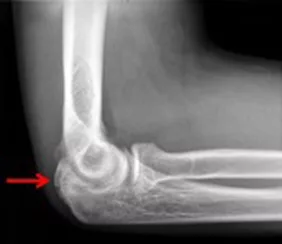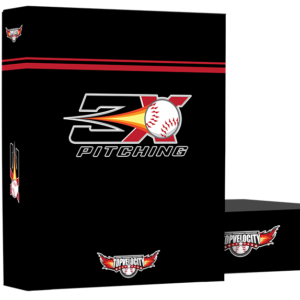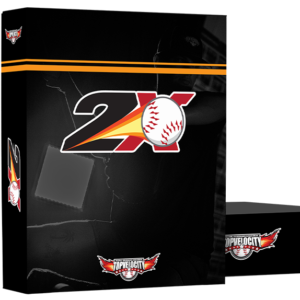Are you a baseball player who frequently finds yourself groaning in agony after a hard throw? You're not alone if you've ever pondered, "Why does my bicep hurt after throwing a baseball?" Bicep pain is a common complaint among baseball players, and understanding the underlying causes, preventive measures, and potential therapies is critical if you want to keep playing the game you love.
Why does my bicep hurt after throwing a baseball?
 You've felt a stinging pain in your bicep, and it's reasonable to wonder what caused it. The strain imposed on the bicep muscle during the throwing motion is the primary cause of bicep soreness after throwing a baseball. Baseball pitching requires a lot of force and repetitive motion, which can cause microtears in the bicep muscle fibers. As a result, inflammation and soreness occur, creating discomfort and reducing your ability to throw properly.
You've felt a stinging pain in your bicep, and it's reasonable to wonder what caused it. The strain imposed on the bicep muscle during the throwing motion is the primary cause of bicep soreness after throwing a baseball. Baseball pitching requires a lot of force and repetitive motion, which can cause microtears in the bicep muscle fibers. As a result, inflammation and soreness occur, creating discomfort and reducing your ability to throw properly.
The Science of Bicep Pain
Let's take a closer look at the mechanics. When you throw a baseball, your bicep muscle tightens strongly in order to produce power and precision. It also is a key muscle in the deceleration of the forearm. This quick and powerful contraction stresses the muscle fibers, causing small rips. Although these microtears are a natural response to vigorous exertion, they cause inflammation and pain. Furthermore, poor throwing technique, insufficient warm-ups, or overexertion can aggravate the strain on the bicep, exacerbating the soreness.
- Warm-Up Routine: It is critical to warm up before engaging in any strenuous physical activity. In order to prepare your muscles for the demands of throwing, incorporate dynamic stretches and moderate workouts.
- Correct Technique: Learning proper throwing mechanics distributes stress evenly across your muscles, reducing bicep strain. Throwers with an aggressive rotating trunk will put more stress on their bicep due to the countering of the forearm flyout.
- Gradual Progression: To avoid overexertion, increase the intensity and frequency of your throws gradually. Pushing too hard too soon can cause undue strain.
- Strengthening Exercises: Perform bicep and shoulder muscular strengthening exercises. This improves muscle endurance and stability during throwing.
- Cool Down and Stretch: Cool down with static stretches after your game or practice session to increase muscle healing and flexibility.
- Rest and Recovery: Allow enough time for your muscles to recuperate between sessions. Rest promotes the healing of microtears and prevents chronic pain.
Identifying the Root Cause of Why does my bicep hurt after throwing a baseball?
 While bicep pain is frequently associated with the throwing motion, it can also be an indication of underlying problems:
While bicep pain is frequently associated with the throwing motion, it can also be an indication of underlying problems:
- Rotator Cuff Issues: Shoulder issues can lead to changed throwing mechanics, putting additional tension on the bicep. Bicep pain might be relieved by addressing shoulder abnormalities.
- Overuse Injuries: Excessive and frequent tossing without adequate recovery might result in overuse injuries. Pay attention to your body and give it the rest it requires.
Video: Bicep Pain Can Ends Careers👎
How to Fix Bicep Pain
Bicep pain from throwing a baseball often signals a fundamental issue with throwing mechanics, muscle imbalances, or both. It's crucial to address these underlying issues to alleviate the stress on the bicep and prevent more serious, long-term injuries. One common mechanical error that puts undue stress on the bicep is "early arm action," where the throwing arm gets ahead of the body in the throwing sequence. This causes the arm to work harder than it needs to, as the kinetic chain is disrupted. The solution here is to practice "hip to shoulder separation," where the hips initiate the throwing action and the upper body follows. This utilizes the full kinetic chain, relieving stress on the bicep.
Strength imbalances across the upper body can also contribute to bicep pain. A balanced strength-training regimen that focuses on the entire upper body—not just the bicep—can make a significant difference. Incorporate exercises that target the rotator cuff, deltoids, trapezius, and latissimus dorsi. The aim is to build a robust shoulder girdle that can better support the bicep during high-stress activities like throwing. Plyometric exercises, done correctly, can also improve neuromuscular adaptation, thereby improving the kinetic chain efficiency from your legs to your fingertips.
Remember, altering mechanics or implementing a new training regimen should always be done under the supervision of qualified professionals. Video analysis can be a useful tool in identifying the specific mechanical flaws contributing to your bicep pain. In severe cases, consult a medical professional for a comprehensive evaluation and personalized treatment plan. All of this aligns with the evidence-based approach of TopVelocity, ensuring that players can perform at their peak while minimizing the risk of injury.
TopVelocity's Velocity Programs will help you improve your game
Do you want to take your pitching or position-player abilities to the next level? Consider the TopVelocity 3X Velocity program for pitchers and the TopVelocity 2X Velocity program for position players. These precisely created programs are meant to improve your mechanics, increase strength, and prevent bicep injuries, giving you the confidence to excel on the field.
Pitchers' 3X Velocity Program
 The TopVelocity 3X Velocity program provides a holistic method for pitchers looking to improve their velocity and overall effectiveness. This curriculum goes deeply into the complexities of pitching mechanics, helping you through specific exercises and drills that improve your delivery. You may lessen the tension on your biceps and other muscle groups by perfecting your mechanics, lowering your chance of injury.
The TopVelocity 3X Velocity program provides a holistic method for pitchers looking to improve their velocity and overall effectiveness. This curriculum goes deeply into the complexities of pitching mechanics, helping you through specific exercises and drills that improve your delivery. You may lessen the tension on your biceps and other muscle groups by perfecting your mechanics, lowering your chance of injury.
What You Should Expect:
- Professional advice on pitching mechanics and form.
- Exercises designed to increase lower body explosiveness.
- Routines for strengthening your core and upper body.
- Analysis of video for individualized feedback and improvement.
The Position Players 2X Velocity Program
 Position players looking to improve their performance and lower their risk of bicep injury can consider the TopVelocity 2X Velocity program. This curriculum is designed to meet the special demands of athletes who throw from a variety of locations. You'll be better ready to handle throws with precision and power if you work on core strength, flexibility, and precise throwing techniques.
Position players looking to improve their performance and lower their risk of bicep injury can consider the TopVelocity 2X Velocity program. This curriculum is designed to meet the special demands of athletes who throw from a variety of locations. You'll be better ready to handle throws with precision and power if you work on core strength, flexibility, and precise throwing techniques.
What You Should Expect:
- Training programs tailored to certain throwing positions.
- Core strengthening and stability exercises.
- Routines for ensuring fluid and efficient throwing motions.
- Injury prevention measures to avoid bicep pain.
Take Action Right Now!
Don't let bicep soreness prevent you from attaining your best athletic potential. TopVelocity 3X Velocity for pitchers and 2X Velocity for position players provide the tools and instruction you need to fine-tune your mechanics, gain strength, and avoid injuries. Improve your game, raise your confidence, and have fun with the game you love.
Visit TopVelocity's official website and discover these transforming velocity programs today to begin your road toward greater performance and injury prevention. Your biceps and game will both appreciate you!
Are you prepared to excel?
TopVelocity's Velocity Programs are a must-see!
Are you ready to step up your game on the field? Learn how TopVelocity's 3X Velocity program for pitchers and 2X Velocity program for position players will help you enhance your game, improve your mechanics, and avoid bicep injuries. Visit TopVelocity right now to realize your full potential!
Frequently Asked Questions: Why does my bicep hurt after throwing a baseball?
Q: Can bicep discomfort be completely avoided?
A: While total avoidance is difficult, using good techniques, warming up, and prioritizing rest can dramatically lower the likelihood of bicep pain.
Q: Is it necessary to freeze my bicep after throwing it to decrease pain?
A: Yes, administering ice to the affected area can help reduce swelling and pain. Remember to cover your skin with a cloth or towel to protect it from direct contact with the ice.
Q: When should I see a doctor for bicep pain?
A: If the pain lasts for an extended amount of time, is severe, or interferes with everyday activities, it's best to see a doctor for a proper diagnosis and treatment plan.
Q: Are there any exercises specifically designed to strengthen the biceps for throwing?
A: Yes, activities like as bicep curls and resistance band training can assist develop the bicep muscle, increasing endurance and resilience during throwing.
Q: Can I play baseball while suffering from bicep pain?
A: It is recommended that you relax and allow your bicep to heal before engaging in strenuous physical activity again. Ignoring the pain and pushing through it can aggravate the situation.
Q: Are there any other treatments for bicep pain?
A: Some people get comfort from therapies such as massage, acupuncture, or physical therapy. To investigate these possibilities, speak with a healthcare practitioner.
Finally, play without pain!
Understanding what causes bicep soreness after throwing a baseball allows you to take preventative steps. You may continue to enjoy the game without pain if you prioritize proper warm-ups, techniques, and recovery. Remember that if the discomfort persists or increases, obtaining medical attention will put you on the road to a pain-free throwing experience.




